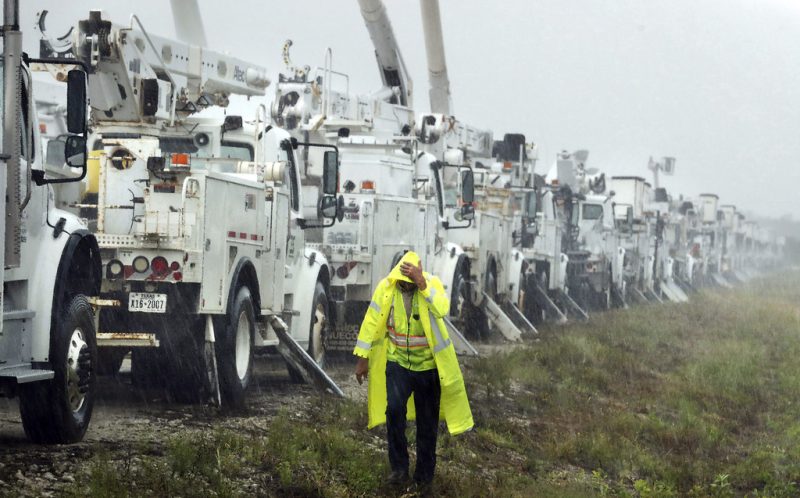FORT LAUDERDALE, Fla. (AP) — Massive Hurricane Helene crashed into Florida’s sparsely populated Big Bend region, bringing storm surge and high winds across the state’s Gulf Coast communities before ripping into southern Georgia.
Where is the storm heading?
Hurricane Helene has weakened to a tropical storm over Georgia with maximum sustained winds of 70 mph (110 kph) early Friday, the National Hurricane Center said.
The storm will continue to weaken as it continues to move north across Georgia. At 8 a.m., Helene was centered about 35 miles (60 kilometers) south-southwest of Clemson, South Carolina, and about 80 miles (130 kilometers) east-northeast of Atlanta, moving north at 30 mph (48 kph), the hurricane center in Miami reported.
Helene wobbled as it approached Florida’s coast late Thursday before making landfall near the mouth of the Aucilla River with maximum sustained winds estimated at 140 mph (225 kph). That location was only about 20 miles (32 kilometers) northwest of where Hurricane Idalia came ashore last year at nearly the same ferocity and caused widespread damage.
Evacuations were underway Friday morning in areas of Western North Carolina. The Haywood County Sheriff’s Office west of Asheville said it was helping with evacuations in in Cruso, Clyde, Canton and lower-lying parts of Waynesville.
How many people are without power?
As of 7:30 a.m. Friday, some 3.4 million people across Florida, Georgia, South Carolina and North Carolina were without power, according to poweroutage.us.
In Florida alone, there were nearly 1.2 million people without power early Friday.
Crews of linemen were stationed throughout the area, ready to begin the process of restoring power as soon as the winds from Helene died down.
What about storm surge?
Flooding along Florida’s coast began well before Hurricane Helene made landfall, with rapidly rising waters reported from as far south as Fort Myers on the state’s Gulf Coast.
Early Friday, sheriff’s officials in Hillsborough County, where Tampa is located, were using a large ATV to rescue people who were stranded by rising waters.
In Cedar Key, an old Florida-style island off the Gulf Coast, many homes, motels and businesses were flooded. Not even the city’s fire rescue building was spared.
“It actually blew out the storm panels on the front doors. Blew out one of the breakaway walls on the back and two entry doors,” the agency posted online. “It appears that we had about 6 feet or better of water inside.”
What is storm surge?
Storm surge is the level at which sea water rises above its normal level.
Much like the way a storm’s sustained winds do not include the potential for even stronger gusts, storm surge doesn’t include the wave height above the mean water level.
Surge is also the amount above what the normal tide is at a time, so a 15-foot storm surge at high tide can be far more devastating than the same surge at low tide.
How are hurricanes measured?
The most common way to measure a hurricane’s strength is the Saffir-Simpson Scale that assigns a category from 1 to 5 based on a storm’s sustained wind speed at its center, with 5 being the strongest.
